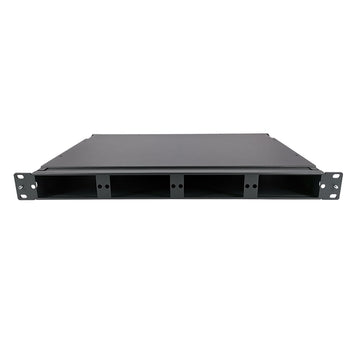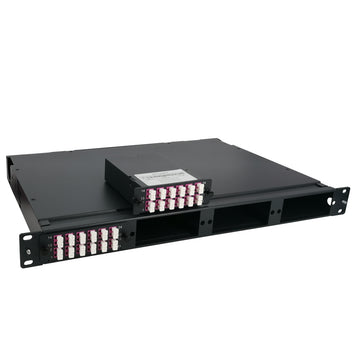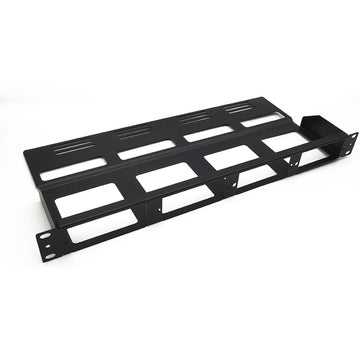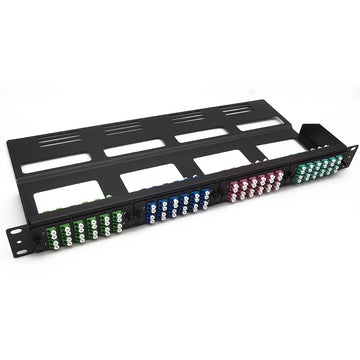Cat5e vs Cat6, which is best for gaming?
Cat5e vs Cat6, which is best for gaming?
One of the things gamers need and prioritize the most is uninterrupted connectivity. As the gaming industry grows, the need for uninterrupted and lightning-fast connections has increased more than ever. Whether it's a powerful PC, the latest laptop or mobile device, or a high-end gaming console, if you want to compete with the competition, you need uninterrupted connectivity. This connection can be made over a wired network (using Cat6 cables, Cat6a cables, and Cat5e cables) or over a wireless network.
While Wi-Fi is great for most games, there's no question it's flawed. Walls, furniture, distance from the router, and how busy the channel is can all affect the quality of your connection, and in latency-sensitive scenarios like gaming, this can adversely affect your experience. With an ethernet cable, you don't have this problem, but not all ethernet cables are created equal.
The best ethernet cables for gaming keep your connection fast and protected.
Whether or not you need a high-performance cable to help with your heavy and frequent file transfers when you're not gaming, it's best to choose a shielded Ethernet cable with a stable connection for your gaming. Let's explore the key features of each to find out which Ethernet cable is the best solution for your gaming needs.
The best Ethernet cables for gaming: Cat5e vs Cat6
Cat5e Ethernet Cable
This is the 5th generation ethernet cable and “e” in the Cat5e represents “enhanced”. This cable offers an impressive data transfer speed of 1Gbps up to a length of 50 meters or 164 feet and 100Mbps up to a distance of 328 feet or 100 meters. Here at Smartech Cables, our Cat5e cable exceeds bandwidth standards as it offers a bandwidth capacity of 350MHz. The inner structure comprises 8 pure copper conductors that are tightly bundled together for enhanced connectivity and the purpose of protection against crosstalk and prevent EMI.
As far as its conductors are concerned, they come in both pure copper and copper-clad aluminum. For gaming purposes, we recommend you go with pure copper conductors.
The Cat5e cable supports the following applications: ATM PMD 155 Mbps IEEE 802.3 Fast Ethernet:10 Base-T, ANSI X3T9.5 TP-PMD (FDDI), IEEE 802.12:100 Base-VG, and 100 Base-T4, 100 Base-X IEEE 802.5:4/16 Mbps Token Ring.
Cat6 Ethernet Cable
As the term itself suggests, Cat6 cable is the 6th generation Ethernet cable that comes with data transfer rates of 10 Gbps and 1Gbps over distances of up to 50-meters/164-feet and 100-meters/328-feet. The cable comes with an enhanced bandwidth capacity of 550MHz; it means not only do you enjoy lightning-fast data transfer rates but also the quality of signal remains intact over longer distances.
Like its predecessor, it too has 8 conductors made of pure copper or copper-clad aluminum and is bundled together in 4 twisted pairs. To give top-notch protection against crosstalk and to prevent EMI, we have walked an extra mile by employing a spline that separates all 4 twisted pairs from each other.
This cable supports high-speed applications such as IEEE 802.3af (PoE) / 802.3an 10GBASE-T.
Cat5e vs Cat6, Which one serves your gaming needs best?
Although Cat5e and Cat6 are both good choices for gaming over Ethernet connections, Cat6 cables are often the preferred type. This isn’t necessarily because of speed, however since 1000Mbps is fine for most gamers. Cat6 cables are better at handling interference than Cat5e cables. They have to adhere to stricter standards when constructed, and though the methods for achieving those standards vary among manufacturers and individual cables, Cat6 Ethernet cables are almost always better protected against crosstalk and external noise than even the best Cat5e.
Whereas Cat5e only has tightly twisted pairs to help reduce crosstalk/ interference, Cat6 cables often employ what's known as a "spline," which is a separator within the cable itself to divide the individual copper wires of the twisted pair. That makes crosstalk between the wires far less likely, improving the signal quality of the cable even more and making for a more stable and accurate connection.
Other Cat6 cables achieve greater crosstalk protection through a tighter twisting of the wires within them, while others employ shielding on individual wires. These cables will be sold with different acronyms to help differentiate them. "S" for shielded, "F" for foil wrapping (for additional noise protection) and "U" for unshielded.

Cat6 cables also enjoy a greater bandwidth than Cat5e (10Gbps vs. 1Gbps) at cable lengths up to 55 meters, which is more than enough distance for most homes. That is more than most will need, especially if just gaming, but the option is there. Cat6 cables can also operate up to 100 meters but at the more restrictive 1Gbps speeds of Cat5e. If you need to run at 10 Gbps above 55 meters, then a Cat6a’s extra shielding will allow that to happen up to 100 meters.
If alongside gaming, you perform large file transfers across your network on a regular basis and your networking hardware like your router and/or switch can support up to 10Gbps Ethernet, then using Cat6 cables is a great idea.
Can I use a Cat5 cable for gaming?
Cat 5 cables are not the same as Cat5e, even though their names are very similar. Cat5 is an older standard and therefore has significantly less functionality and performance. While it could theoretically support Gigabit Ethernet, that's only over short distances. So it's traditionally advertised as only supporting 100Mbps Ethernet connections, not Cat5e's gigabit connections (or Cat6's 10Gbps).
But raw performance doesn't really matter that much for gaming, as most games don't use bandwidth that's anywhere near that which might stress a Cat5 Ethernet cable. What is shielding and connection quality. Cat5e and Cat6 handle crosstalk and interference well, and most Cat5 cables are unshielded, which makes them more susceptible to crosstalk and noise from other equipment that can contaminate the signal and degrade its quality. In theory, this could cause you to miss your next headshot.
Conclusion
It's a toss up between Cat5e and Cat6, but if you want your network to get a major upgrade in the future, go for Cat6. Since Cat6 cables are the best choice for gaming, it's important to buy cables from trusted sources. Lightoptics offers Cat6 cables in a variety of lengths, styles and colors to meet every need.
Choosing Cat5 over the newer standard saves so little, so the best Ethernet cables for gaming are Cat5e and Cat6.












